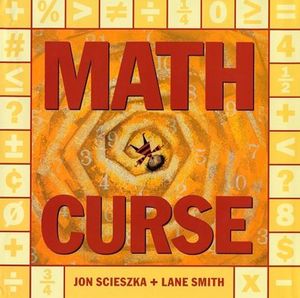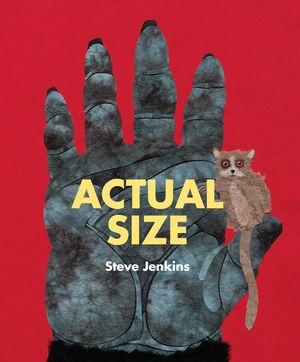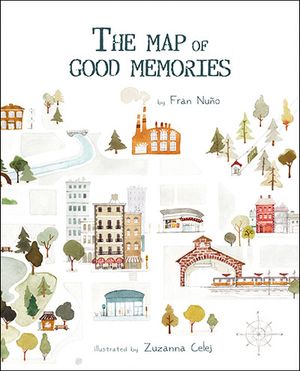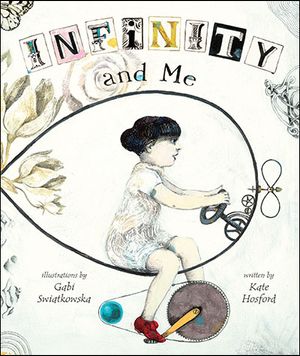Interactive Read Aloud Lesson With Math Concept
Read-aloud time is typically dedicated to building reading comprehension. Sometimes teachers comprise some social studies ideas, but rarely does math get to be front end and center.
That should change because math and reading don't exist in separate silos. Adults who use math on a daily ground as well demand to be strong, fluent readers. Likewise, math requires stiff logical reasoning skills, which can be honed in tandem with with reading skills. This is why reading about math, also every bit using reading as an opportunity to engage with mathematical concepts, should be embraced.
When we blend these disciplines, we invite students to engage with math in a new—and oftentimes far more inviting—way. Kids who have struggled with geometry may love the opportunity to write a shape story, for case—and it might fifty-fifty help them to remember that a square is a type of rectangle simply a rectangle is not a type of square.
This far-from-exhaustive list of read-aloud books and related activities can help go teachers started thinking most how to incorporate mathematical reasoning, logic, and concepts into literacy instruction.
Math Curse

©Penguin Young Readers
Math Curse, written by John Scieszka and illustrated by Lane Smith, is a hilarious book nigh a pupil who, after existence told that anything tin exist a math problem, wakes up to find that she tin can only see math problems in everything effectually her.
Activities: Math expletive your students—have them go effectually the school and find math problems. You tin extend the lesson past having them solve the problems they notice (or pick a few for the class to work on together). For instance, yous might pose the problem of needing new classroom supplies. Requite students a budget and prices for items and encourage them to decide how to spend the money.
Actual Size

©Houghton Mifflin Harcourt
Bodily Size, by Steve Jenkins, explains the sizes of different parts of animals, from a gorilla'southward manus to the world'due south largest tarantula. It's fantastic for teaching size and scale, and the collage illustrations are beautiful.
Activities: Have students choose an animal they're interested in and build either the whole animal or part of it in its actual size. For example, students could option an insect and enquiry its dimensions, and then draw it accurately on graph paper. For a more elaborate project, students could draw an animal to scale on a large piece of craft paper or with painters tape on the floor; alternatively, they could build it using papier-mâché.
Triangle
In the engaging taleTriangle, written by Mac Barnett and illustrated by Jon Klassen, Triangle tries to flim-flam his friend Foursquare... and a battle of the shapes ensues. This book is part of the Shape Trilogy—don't forget to cheque out Circle and Square.
Activities: Have students write a shape story with at least one fact well-nigh each shape included. For younger students, y'all might give them role of the story and encourage them to finish it. Or have them write a song or poem nearly a shape of their choosing.
As an alternative, accept your students create a podcast in which they interview a shape. They can ask that shape about its favorite uses (eastward.g., "I'm a pentagon and my favorite use is a baseball plate"), its best friends ("Equally a pentagon, I love squares because when nosotros get together it looks like nosotros've made a pencil!"), and and then on.
The Map of Practiced Memories

©Cuento de Luz
When Zoe has to flee her hometown because of war, she creates a "map of skilful memories" in this book written written by Fran Nuño and illustrated by Zuzanna Celej.
Activities: Create a map of adept memories with students. Each pupil tin can create their own, using a map of their dwelling, schoolhouse, or hometown. Or you tin create a class map and accept each student provide a retentiveness for a different place in your boondocks. This action provides an opportunity to work on map skills such every bit measurement, scale, and altitude. For older students, you might apply graph paper to create a scaled map of good memories.
Infinity and Me

©Lerner Publishing Group
In Infinity and Me, written by Kate Hosford and illustrated by Gabi Swiatkowska, Uma looks upwardly at the heaven and feels small in the face of so much. This leads her to ponder what infinity ways and looks like. This is an unusual volume about a fascinating thought.
Activities: To get students thinking about the concept of infinity, sit in a circle and ask students to come upward with the largest number they can. Go around until you feel similar stopping, and declare the last person the winner. Your students volition immediately betoken out that this is unfair because whoever goes concluding will win. Suggest some other game: Do the same thing, only have students get effectually trying to say the smallest number they can. The same thing will happen. Talk over with students how a person could perhaps win this game. This will spark a great conversation about how numbers tin can continue infinitely. Sitting in a circle gives students a physical view of infinity too—yous could go around that circumvolve forever.
Another great way to get students thinking about infinity is to have them make a list of all of the things that go on infinitely, such as the number of stars in the universe or the number of times y'all tin cut a rope in half.
Source: https://www.edutopia.org/article/5-engaging-books-math-read-alouds
0 Response to "Interactive Read Aloud Lesson With Math Concept"
Enregistrer un commentaire